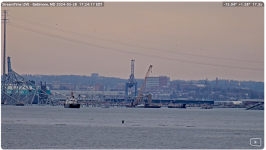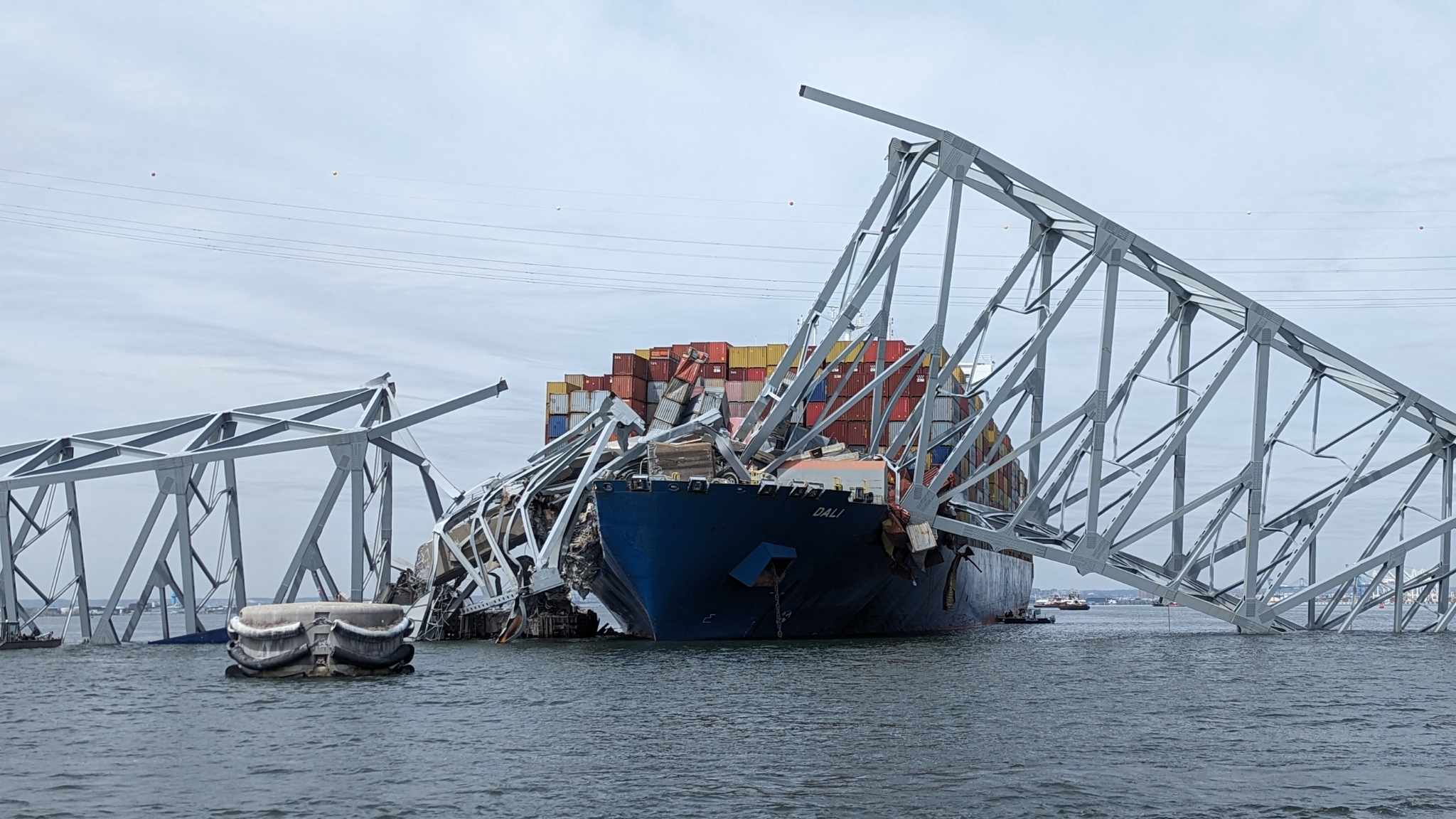Plain Jane
Just Plain Jane
Central American and Mexican families mourn the workers lost in the Baltimore bridge collapse
The missing workers from the Baltimore bridge collapse were from Mexico or Central America.
Central American and Mexican families mourn the workers lost in the Baltimore bridge collapse
CLAUDIO ESCALÓN
Updated 2:09 AM EDT, March 28, 2024
Share
Follow AP for live coverage of Baltimore’s Key Bridge collapse
AZACUALPA, Honduras (AP) — The construction workers who went missing in the Baltimore bridge collapse came to the Maryland area from Mexico or Central America, including an enterprising Honduran father and husband who started a delivery business before the pandemic forced him to find other work, according to his family.
Police managed to close bridge traffic seconds before a cargo ship slammed into one of the Francis Scott Key Bridge’s supports early Tuesday, causing the span to fall into the frigid Patapsco River. There wasn’t time for a maintenance crew filling potholes on the span to get to safety.
At least eight people fell into the water and two were rescued. Two bodies were recovered Wednesday and four remained missing and were presumed dead.
Here’s what to know:
- Victims: At least eight people went into the water. Two were rescued but the other six, part of a construction crew that had been filling potholes on the bridge, are missing and presumed dead.
- Investigation: The cargo ship, called Dali, lost power and issued a mayday call shortly before it rammed the bridge. The U.S. Coast Guard boarded the vessel Wednesday to collect evidence about the exact circumstances of the crash.
- Impact: The collapse is diverting shipping and trucking around one of the busiest ports on America’s East Coast, creating delays and raising costs in the latest disruption to global supply chains. Transportation Secretary Pete Buttigieg says it’s too soon to say how long it will take to reopen the port or replace the bridge.
Maynor Yassir Suazo Sandoval, 38, was the youngest of eight siblings from Azacualpa, a rural mountainous area in northwestern Honduras along the border with Guatemala.
Eighteen years ago, he set out on his own for the U.S. looking for opportunities. He had worked as an industrial technician in Honduras, repairing equipment in the large assembly plants, but the pay was too low to get ahead, one of his brothers, Martín Suazo Sandoval, said Wednesday while standing in the dirt street in front of the family’s small hotel in Honduras.
“He always dreamed of having his own business,” he said.
Another brother, Carlos Suazo Sandoval, said Maynor hoped to retire one day back in Guatemala.
“He was the baby for all of us, the youngest. He was someone who was always happy, was always thinking about the future. He was a visionary,” he told The Associated Press by phone Wednesday from Dundalk, Maryland, near the site of the bridge collapse.
Maynor entered the United States illegally and settled in Maryland. At first, he did any work he could find, including construction and clearing brush. Eventually, he started a package delivery business in the Baltimore-Washington area, Martín Suazo Sandoval said.
Other siblings and relatives followed him north.
“He was the fundamental pillar, the bastion so that other members of the family could also travel there and later get visas and everything,” Martín Suazo Sandoval said. “He was really the driving force so that most of the family could travel.”
Maynor has a wife and two children ages 17 and 5, he said.
The COVID-19 pandemic forced Maynor to find other work, and he joined Brawner Builders, the company that was performing maintenance on the bridge when it collapsed.
Martín Suazo Sandoval said Maynor never talked about being scared of the work, despite the heights he worked at on the bridges. “He always told us that you had to triple your effort to get ahead,” Martín Suazo Sandoval said. “He said it didn’t matter what time or where the job was, you had to be where the work was.”
Things had been going well for him until the collapse. He was moving through the steps to get legal residency and planned to return to Honduras this year to complete the process, his brother said.
Even though Maynor had not been able to return to Honduras, he had financially supported various nongovernmental social organizations in town, as well as the youth soccer league, his brother said. The area depends largely upon agriculture — coffee, cattle, sugarcane — he said.
Maynor’s employer broke the news of his disappearance to his family, leaving them devastated, especially his mother, who still lives in Azacualpa, Martín Suazo Sandoval said.
“These are difficult moments, and the only thing we can do is keep the faith,” he said, noting that his younger brother knew how to swim and could have ended up anywhere. If the worst outcome is confirmed, he said the family would work to return his body to Honduras.
The tragedy illustrated the contributions that migrants make to the U.S. economy, López Obrador said.
“This demonstrates that migrants go out and do risky jobs at midnight. And for this reason, they do not deserve to be treated as they are by certain insensitive, irresponsible politicians in the United States,” he said.
Later, Col. Roland L. Butler Jr., superintendent of Maryland State Police, announced that the bodies of two men, ages 35 and 26, had been located by divers inside a red pickup submerged in about 25 feet (7.6 meters) of water near the bridge’s middle span.
One was Guatemalan Dorlian Ronial Castillo Cabrera, 26, and the other 35-year-old Alejandro Hernández Fuentes, originally from Mexico.
Guatemala’s Foreign Affairs Ministry had earlier confirmed that two of its citizens were among the missing. And El Salvador’s foreign minister, Alexandra Hill Tinoco, posted Wednesday on X that one Salvadoran citizen, Miguel Luna, was among the missing workers.
Federal and state investigators have said the crash appears to have been an accident.

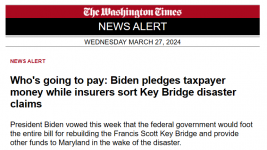


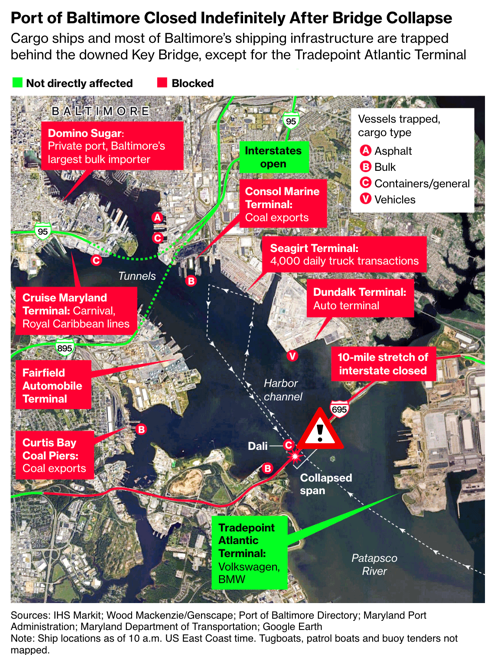 Source: Bloomberg
Source: Bloomberg
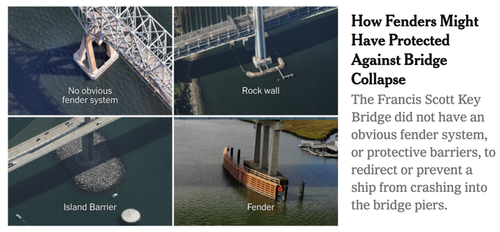 Source: NYT
Source: NYT
